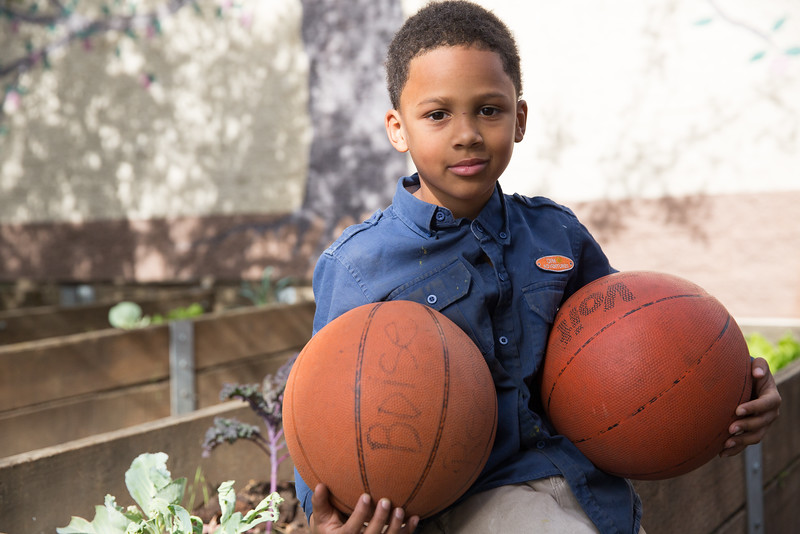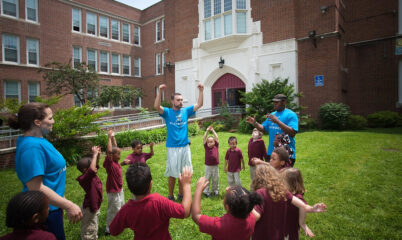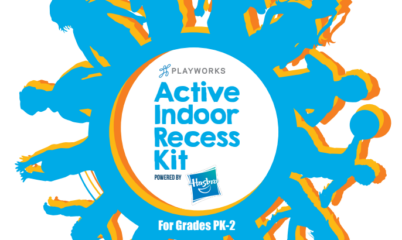Rapport building is always key to a successful, engaging school year.
When kids feel safe, empowered, and cared for, they are more likely to attend school, lean into their education, and develop critical social and emotional skills.
This year, students around the country are going to school virtually, in-person with potential virtual experiences during COVID hotspots, or in a hybrid model. Each of these models creates various challenges for how educators and children build rapport and how children and their peers create social connections.
To help with this transition, Playworks is pleased to share tools to bridge the physical divide and create social connection in a fun way.
All virtual
- Challenge 1: Building community between students and educators, especially those who don’t know each other, has to happen differently in a virtual setting for kids to form authentic friendships and connections.
- Tips to overcome the challenge: Think of social connection as a journey. Each little milestone matters. By taking advantage of small moments to emphasize social interactions, you can create the space for kids to develop relationships throughout the school year.
- Playworks tool: Consider allowing kids to participate in minute movers with partners every day. Even if the whole class is on screen together, pair kids up to watch each other and cheer for each other during a minute mover. For example, can you do 10 jumping jacks while cheering for your friend as they finish each jumping jack? Also, educators can consider hosting Think, Pair, Share activities for kids in breakout rooms so they can increase social connection with one other student or a small group regularly. Think, Pair, Share is a collaborative learning strategy where students take time to think about something themselves, pair up and discuss it together, and then a few students share out with the larger group.
- Challenge 2: An educator might not have natural opportunities for stopping points in the curriculum for behavior correction or private conversations with students. It may be hard to know what a child is going through if those natural conversations don’t have time and space.
- Tips to overcome the challenge: Set a norm that at the end of every day, kids get to say their 3A’s: Ah ha’s, Appreciations, and Apologies. If you see less-than-ideal behaviors, private message the student and encourage them to participate in the three A’s at the end of the day. Another idea is for the educator to focus on partnering with a different child in a rapport-building game or activity each day. When educators jump in and play with kids, kids can relate to them more and build stronger relationships.
- Playworks tool: One of the best games to get to know where someone is coming from is If You Really Knew Me. You can play this game often and mix up the pairings. The educator should play along and pair up with a student who they want to build a connection with.
Hybrid: part virtual and part in-person
- Challenge 1: Kids might be grouped differently for their in-person and online experiences or have a different educator in each section, providing varying opportunities for connection building.
- Tip to overcome the challenge: Partner with other adults who work with the same kids to ensure kids are given the opportunity to connect. Virtual break out rooms can be the same pods kids experience in school. You can alternatively provide new opportunities for kids to get to connect with other kids online; when you do this, prioritize giving kids an opportunity to get to know each other before jumping into a project.
- Playworks tool: Consider asking kids Check-In Questions in class and online. A Check-In Question is a question that everybody can answer. It is an opportunity for people to get to know each other and let down their guard, giggle, and connect. These can be varied by age group. A few examples are If you were an animal, what would you like to be and why?, If you could have any superpower, which would you want?, What was something you did this summer that was really fun? Who inspires you most?
- Challenge 2: Creating norms that encourage socialization and trust that work well in both virtual and in-person environments may be challenging for an educator to develop on their own.
- Tip to overcome the challenge: Invite kids to join you in coming up with creative solutions that they might enjoy in-person and online. By leveraging youth voice and choice, you’ll create safe opportunities to engage everyone in building creative solutions and increase trust and accountability. This can range from setting and checking in on Group Agreements to game facilitation strategies. Once you’ve designed a solution, let kids lead each other (in person and online) so that they continue building trust with other kids’ ideas, voices, and teamwork.
- Playworks tool: Sample group agreements include Don’t Yuck my Yum, Participate Fully, Be Safe, Right to Pass, Try It On, and Have Fun. By inviting kids into the process of making these agreements, they will feel ownership of the norms. And then, it is time to play! Some of our favorite community-building games that can be played virtually or in-person are I Love My Neighbor, Movement Name Game, and Charades. Teach these games and ask kids to develop creative game modifications or use these games as inspiration for kids to develop new games for you to play.
In-person with potential virtual experiences during COVID hotspots
- Challenge 1: Wearing masks means that kids can’t read each other’s emotions from body language.
- Tips to overcome the challenge: Mood meters can be a great way for kids to express where they are at any given time.
- Playworks tool: For younger kids, set a norm that kids can ask each other for a thumb-meter (from thumbs up to thumbs down) about how they are feeling. For older kids, consider using the thumb meter in person and using emojis in chats on your virtual platforms during downtimes.
- Challenge 2: Kids may not be able to do group projects or activities with other kids.
- Tips to overcome the challenge: Enabling kids to make new friends and find connections will need to be time built into the school day.
- Playworks tool: Start every day with an age-appropriate check-in question. Ask everyone who relates to someone’s answers to do a physical motion in their personal space. Check out the rules of one of our favorite Playworks games, Superstar, for more.
- Challenge 3: Kids might struggle during downtimes to switch into a virtual learning environment and continue making progress on creating authentic connections.
- Tips to overcome the challenge: Set norms that work in online and in-person environments that you use all year, such as using the 3A’s or playing games in between subjects.
- Playworks tool: Consider playing a Minute Mover or Playworks Game every day around the same time or in between the same sections of the day. Our Safe Return to Play Guide can help you quickly learn how to adapt some of your favorite Playworks activities for virtual environments.



